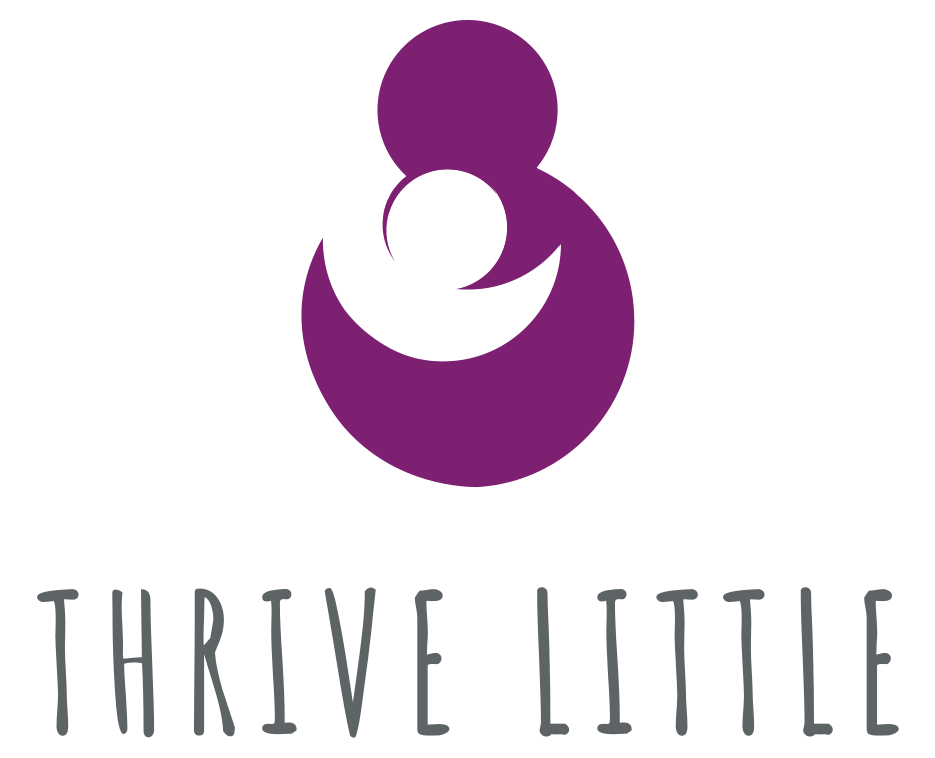Flat head syndrome became a much bigger issue after the Back to Sleep campaign began in 1994. Before that, babies often sleep on their tummies or on their sides. As pediatricians became advocates of Back to Sleep, parents were told to only place their babies on their backs when sleeping. This campaign has been successful in reducing the rate of SIDS by more than 50%, which is pretty incredible. Obviously, saving babies’ lives is more important than anything else, but there is a downside to babies spending so much time on their backs. Newborns may sleep as much as 18-19 hours per day and this is a lot of time to spend in only one position.
Back to Sleep and Flat Head Syndrome
The incidence of flat head syndrome (often referred to as “deformational plagiocephaly” or “positional plagiocephaly”) increased significantly after the onset of the Back to Sleep campaign. Laying in one position for too long increases the chance of developing a flat spot due to the pressure it puts on the skull. Babies’ skulls are somewhat soft and moldable in order to fit through the birth canal, so they are very vulnerable to skull flattening.
Babies can develop a flat spot on any area of their skull. If the flat spot is on the side of their head, it is called plagiocephaly. If on the back, brachycephaly. Preterm infants sometimes develop flattening on both sides of their head, which is referred to as scaphocephaly or dolichocephaly.

How to Prevent Babies from Developing a Flat Head
Fortunately, there is a lot you can do to prevent your baby’s head from getting flat. It is important for babies to sleep on their backs, so focusing on their position during wake time is key. Here are some things you can do when baby is awake to prevent their head from getting flat:
- Frequent tummy time throughout the day. Use interesting toys, a mirror, or yourself to entertain your baby to increase how long they can stay in this position.
- Placing baby on their side is another great way to encourage motor skill development while reducing the time that there is pressure on the back of their skull.
- Minimize use of containers (swings, bouncers, baby seats, or anything else that “contains” your baby). Overuse of containers restricts movement and increases the incidence of flat spots.
- Try wearing your baby with a wrap or structured carrier if you are able to. Babies tend to like this feeling of closeness and it is a very effective way to prevent flat head syndrome.


Preventing Flat Head Syndrome While Baby is Sleeping
The most effective strategy for preventing flat spots during sleep is to vary baby’s head position. Make sure baby doesn’t spend too much time with their head in only one position. Alternate their head facing to the right, to the left, and facing up. Alternate the end of the crib your baby’s head is on each time you lay them down as well. Babies have a tendency to turn their heads more in the direction of more stimulation (think ceiling fan, open door, window, your bed, etc), so frequently changing which side has more stimulation (visual or auditory) can help prevent them developing a strong preference for one side.

Flat spots are incredibly common in babies. If your baby already has a flat spot, the strategies described in this article are many of the same strategies to treat flat spots. If the flat spot is significant and your baby is more than 4 to 5 months, they may benefit from an assessment for helmet therapy. Talk to your baby’s doctor if you are concerned about your baby’s head shape. Early intervention is key to preventing a lifelong deformity. Babies also often benefit from an assessment by an occupational or physical therapist because there are sometimes other underlying issues that increased a baby’s chance of developing a flat spot. Babies with body tightness, low muscle tone, oral restrictions (such as a tongue tie), or delayed motor skills are at increased risk of developing a flat spot.
Prevention is always ideal and if you are aware of this issue before your baby is born or during the newborn period, you can likely prevent a long-term issue. Knowledge is power!
References
National Institute of Child Health and Development. (2022, July 8). Safe to Sleep. https://safetosleep.nichd.nih.gov/safesleepbasics/about
Turk, Andrew E. MD; McCarthy, Joseph G. MD; Thome, Charles H. M. MD; Wisoff, Jeffrey H. MD The “Back to Sleep Campaign” and Deformational Plagiocephaly, Journal of Craniofacial Surgery: January 1996 – Volume 7 – Issue 1 – p 12-18.
This post contains affiliate links
- The best-selling Baby Einstein 4-in-1 Kickin’ Tunes Music and Language Discovery Activity Gym…
- 4 modes include lay and play, sitting up, tummy time, on the go; Helps baby strengthen neck muscles…
- Design: Supportive C shaped pillow with stackable pillows, detachable teether, tummy time pillow,…
- Includes: Detachable BPA free teether, plush cloth toucan with attached mirror and attachable soft,…
- { Supreme Quality and Attention to Detail is our Goal }This water splash pad play mat is constructed…
- { Stimulates Baby Development } The splashin’kids water fill playmat is an essential tool for…
- The Baby Einstein Cal-a-Pillow Tummy Time Activity Pillow features 9 multisensory elements to…
- Soft, ultra-comfy pillow encourages extended tummy time sessions to encourage baby’s head and neck…
- Meaningful & Lovely Newborn Toys By ZICOTO: Watch your baby evolve day by day – truly heartwarming!…
- Precious For Tummy Time Practice: Stage 1 of the 7.5×5.9” activity book engages & entertains your…






